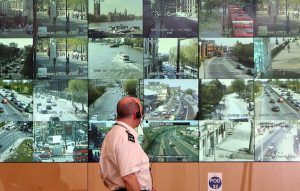There’s No More Getting Away With Murder
Between our phones and the multitudes of video cameras, it's difficult to avoid detection.

(Photo by Matt Cardy/Getty Images)
It used to be, when I started working as a criminal defense attorney, we could win cases. Reasonable doubt existed because prosecutions were based only on the testimony of a couple of witnesses and minimal, or no, forensic evidence. Those were the days before everyone carried a smartphone and before CCTV cameras dotted the landscape.
All that’s now changed. It’s just not possible to get away with murder, or frankly any crime, in any place hooked up to the internet or a camera.

The Smartfirm Playbook - Thriving In Today’s Legal Landscape
Many things we touch, pass, or carry contain tracker systems providing a bird’s-eye view of where we’ve been, what we’ve seen, dwelled on, purchased, and experienced. The most obvious is our own phones. The first thing police nab when you’re arrested is that mini-computer — a complete diary of your life. Law enforcement needs permission from a court first, but getting a search warrant is easy with a minimal showing of probable cause to arrest. Once that phone data is uploaded not only can everywhere you’ve been be tracked, but also indelibly recorded is every website you’ve looked at, every text sent, every number called, every cell tower passed. Privacy as we’ve known it, no longer exists.
Whether you live in a rural or urban area, your phone not only helps triangulate your position, but tells police who your friends are, what you’re interested in, and even what you’re thinking. In short, our phones, with their connection to the cloud, are the most revealing items we possess.
Added to that breach of privacy is the omnipresence of close-circuit cameras which give police another means to track us point to point.
The first thing police do in investigating a crime scene is “pull the video.” They retrieve 24/7 recordings from every store, bridge, street corner, and building in every direction for miles, permitting them to follow the suspect from where he set out that morning to where he returned that night.
Sponsored

The Smartfirm Playbook - Thriving In Today’s Legal Landscape

LawPay Pro Offers Upgraded Time And Billing Essentials

InterAction+ Brings Power Of CRM Software To Law Firms Of All Sizes

How to Achieve Quicker, More Valuable Case Settlements with Minimal Effort: A Guide for Personal Injury Lawyers
They start with where the crime took place then backtrack. If the perpetrator runs from the scene, cameras will show the path. If he goes into the subway, there’s video where he entered, and through comparing data on his metro card with subway turnstile information, video of where he exited. From there, cameras record his activity all the way back to his apartment building, up the walkway, through the lobby (often the clearest shot), up the elevator (another clear shot, but often of just his back), to the very floor where he lives. If he dumps a piece of evidence in the garbage shoot, that’s on video. If he changes his clothes and later takes an Uber to the airport — that, too, is captured.
In the rare circumstance where a street camera is on the blink, another of the many cameras along the way will catch his face, maybe in the deli where he stopped to pick up a smoke before the crime. That shot will then be uploaded and compared to photos in a multitude of databases including police departments, federal law enforcement agencies, DMV, and even social media. Facial recognition software is pretty effective.
I’m amazed at how many of my clients commit crimes while standing under a camera or without realizing that the means of their own capture, their phone, is right in their pocket.
The likelihood of getting caught after committing a crime in the 2020s is a lot higher than it was in the 1990s.
So, what does that mean for defense attorneys?
Sponsored

How to Achieve Quicker, More Valuable Case Settlements with Minimal Effort: A Guide for Personal Injury Lawyers

How Generative AI Is Disrupting Law Firm Billing Practices
Our jobs have changed. Guilt or innocence is less the issue. It’s now about mitigation — helping the prosecution see what’s fair for punishment because conviction is often inevitable. It’s tough to bring the humanness of every person to the fore no matter the crime, but defense attorneys are the only ones who stand between maximum sentences and something more reasonable.
When prosecutors know they have an airtight case, they’ll often make no reasonable plea offer.
If we can etch even two years out of a 25-year sentence, that’s two years of a person’s life. It means a lot to that person and his family.
Our job is less as dogged cross-examiners and more like that of miners, excavating our clients’ stories, then sharing them with the prosecution. That means visiting them more often in jail, getting to know their families, helping the client and his family understand why a 23-year flat sentence is better than 25 to life.
We must encourage prosecutors to see the fairness of offering lower sentences or even nonjail alternatives where appropriate.
We become social workers, psychologists, and family counselors — less Perry Mason and more Oprah Winfrey. We are hand holders to both the client and his family, then must present the prosecution with the most compelling context of why the crime happened and, even though it happened, why the defendant deserves mercy.
It’s definitely not as much fun as going to trial, but it’s just as meaningful.
Toni Messina has tried over 100 cases and has been practicing criminal law and immigration since 1990. You can follow her on Twitter/X: @tonitamess.








